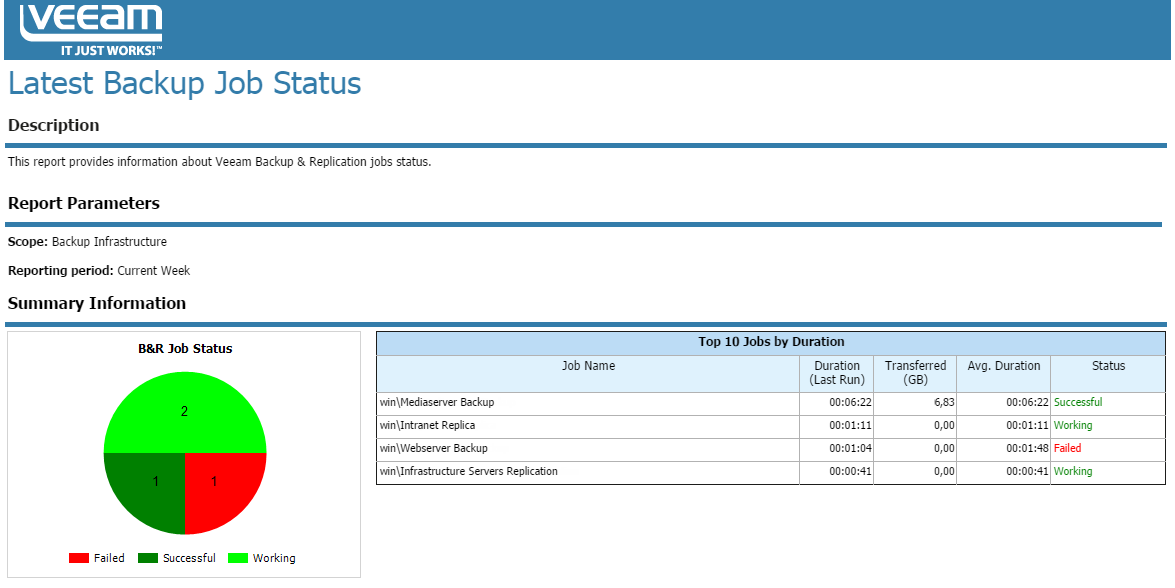

- #Veeam backup reports install#
- #Veeam backup reports software#
- #Veeam backup reports Offline#
- #Veeam backup reports download#
With a victim's data now stolen and their backups deleted, the attackers deploy their ransomware throughout the compromised network using PSExec or PowerShell Empire typically during off-hours.
#Veeam backup reports install#
Unless you subscribe to service add-ons such as immutable backups, as the actors have full access to the local install of backup software, they can simply delete any backups that exist in the cloud.
#Veeam backup reports Offline#
"Cloud backups are a very good option against ransom but do not 100% protect as cloud backups are not always good configured, offline backups often outdated - the system of backups is really nice but human factor leaves some options," DoppelPaymer told us via email.


Regardless of whether the backups are used to steal data, before encrypting devices on the network the attackers will first delete the backups so that they cannot be used to restore encrypted files.ĭoppelPaymer told BleepingComputer that even though cloud backups can be a good option to protect against ransomware, it is not 100% effective. Deleting backups before ransomware attacks This could include keyloggers, phishing attacks, or by reading locally saved documentation on the backup servers. The Maze operators did not elaborate on how they gain access to the cloud credentials, but DoppelPaymer told us they use "all possible methods". Clouds is about security, right?"Īs the attackers are restoring directly from the cloud to their servers, it won't raise any red flags for the victim as their servers appear to be operating normally with no logs being created in their backup software.
#Veeam backup reports download#
If backups in the cloud it is even easier, you just login to cloud and download it from your server, full invisibility to "data breach detection software". No need to search for sensitive information, it is definitely contained in backups. When Maze finds backups stored in the cloud, they attempt to obtain the cloud storage credentials and then use them to restore the victim's data to servers under the attacker's control.
#Veeam backup reports software#
Using tools such as Mimikatz they proceed to dump credentials from the active directory.Īccording to Nero Consulting, an MSP and IT Consulting company based out of New York City who assisted me with this article, this could allow the attackers to gain access to backup software as some administrators configure Veeam to use Windows authentication. Once they gain access to a machine, they spread laterally throughout the network until they gain access to administrator credentials and the domain controller. Attackers first use your cloud backups to steal your dataĭuring ransomware attacks, attackers will compromise an individual host through phishing, malware, or exposed remote desktop services. Not because it is less secure than other software, but simply because it is one of the most popular enterprise backup products and was mentioned by the ransomware operators. It should be noted that in this article we will be focusing on the Veeam backup software. This was not meant to expose the information to others for further attacks but was used as a warning to the victim that the ransomware operators had full access to their network, including the backups.Īfter seeing this information, I reached out to the operators of the DoppelPaymer and Maze Ransomware families to learn how they target victim's backups and was surprised by what I learned.


 0 kommentar(er)
0 kommentar(er)
